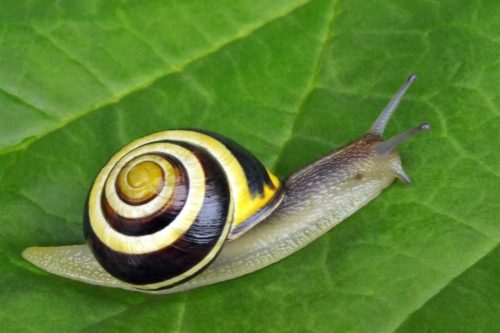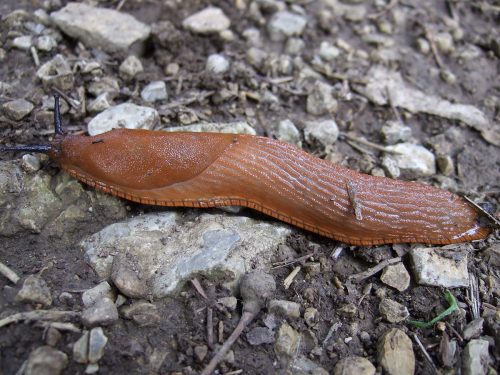Slugs are especially active at night; they like a moist environment. They live on fungi and dead material, as well as fruits and vegetables.
Slugs and snails are especially active at night; they like a moist environment. They live on fungi and dead material, as well as fruits and vegetables.
You will find snails and slugs in every garden, with slugs causing the most damage. Snails are often a real pest. Common are the grove snail (Cepaea nemoralis), garden snail (Cornu aspersum), Roman snail (Helix pomatia), small striped slug (Arion hortensis) and white garden snail (Theba pisana). In the wild these snails and slugs also live, but there they do not easily form a pest because there are also plenty of natural enemies in the wild.
Snails and slugs do a good job in an environment where there is no snail or slug overpopulation. Snails and slugs eat dead plant material in addition to living greenery, thus contributing to a healthy ecosystem.
In wet summers with lots of rain, there are many slugs and snails. They “walk” using a mucus trail and that requires moisture. If that is widely available, they are everywhere. During heat waves, they hide in shady, cool places.
Unlike the common slug, the great grey slug (Limax maximus) or leopard slug eats other slugs in addition to plants.

Where to find
- Vegetable plot and ornamental garden
Control
Move a single slug or snail to a place where it can do less harm. Spreading salt against snails and slugs is quite a crude method and bad for the environment.
Because slugs are especially active at night, hunting slugs with a flashlight should be done at night or in the evening.
Prevention
Frogs, hedgehogs, birds and mice eat snails. Provide shelter for hedgehogs and nesting habitat for birds. Some chickens eat slugs; put them in the vegetable garden for a while. Protect young plantings with sharp material such as sharp sand, pi
Also effective are so-called “snail walls”: metal or plastic strips with a serrated edge. Attempts by snails to crawl over the metal spikes fail because the weight of the snail exceeds the adhesive force of the snail mucus. Available commercially. There is also a slug/snail screen, a strip of mesh (plastic) with flaps; the flaps provide a barrier to slugs and snails.
A bowl of dry cat food attracts snails, after which it becomes easy to put them elsewhere.
A beer trap also helps, as does natural slug pellets or the use of nematodes.
For a single plant, self-adhesive copper tape will also suffice.
A small ditch with water (15 cm wide and 15 cm deep) around the plants keeps snails and slugs away, because snails nor slugs can swim.

